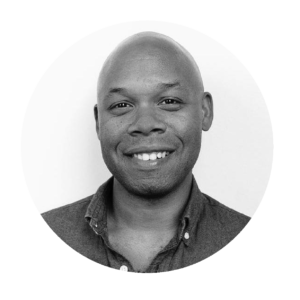by Tre Johnson, Partner of DEI at Catalyst:Ed 
What hope is there for the future of Black lives?
Does imagining such a future matter in the midst of a pandemic?
The most visible strain of America’s pandemic was recently made aware again at the expense of the lives of Ahmaud Arbery, Breonna Taylor and George Floyd–all senselessly slain for the inconvenience of being Black in the wrong situations. Additionally, at scale the pandemic has been damaging to the Black community from a health, humanity, housing, employment and cultural perspective, far more perniciously than it has impacted other communities. It’s been hard for some people to pinpoint where to place advocacy, care and concern when the default setting is to believe that the only path forward is to see this current climate as universal. And yet, even in the midst of the harrowing stories of the pandemic, colonized America’s original pandemic, racism, has continued to mutate and persist.
This was at the backdrop of my mind as I talked to DeRay McKesson, a public voice on issues at the intersection of Black lives and police reform dating back to the 2014 murder of Mike Brown, during the annual National Charter Schools Conference (NCSC–you can catch a recording of our conversation here) last month. Our 60-minute conversation spanned a wide range of topics: education reform at the school and systemic level; thoughts on meaningful student and teacher activism and the progress of the #BlackLivesMatter movement since its formation in 2014 by Alicia Garza, Patrice Cullors and Opal Tometi. For much of the conversation, DeRay and I discussed the way to approach the elephantine presence of white supremacy and systemic oppression. Much like the pandemic in general, there was a captured and trained audience on this discussion that felt perhaps a little bit different; a popular sentiment around hope during these times where people feel occasionally abundant with hope or desperately seeking it. Leading up to and through our keynote chat, my pandemic soundtrack had had many sounds to it, as people have talked to me about their experiences of loss with or of family and friends; their loss of normalcy and control; or, as national guards, increased police started forming hard borders on the notions of everyday life and mobility, their loss of safety and freedom. Yet others still found ways to think about how joy became a delicious scavenger hunt; their quiet missions of finding things that restored their strength, love and happiness. This has been uniquely true I found, with Black people, who were holding a familiar double consciousness about the pandemic and the Black killings, requiring a familiar but also accentuated resilience during these times. Finding small joys in food, laughter, people, reading Black narratives and histories, have been vital slices of humanity during these inhumane times when the invisible swords of COVID-19 and racism seem to be whirring around us the entire time.
During our conversation together, one of the thoughts that I shared with DeRay was that “when you’re pushed to the margins of society, you have to have an increased imagination to conceptualize what’s possible in the world.” Like a lot of us, I’ve been in deep relationship with different types of art during the pandemic; imbibing movies, books, music and images that I felt had the potential to not only keep me balanced during the particularly hard times of racial strife, but finding myself in particular gravitating towards those things that allowed me to have conversations with myself and others about the urgent need to visualize a pandemic-touched, racially-forward world where pain needn’t be one of the prevailing definitions of our experiences as Black and brown people. As we talked about one of the core issues here though–what’s needed to change? What does change look like?–I thought about how hard it was in that space to name the things that all these things achieve: unadulterated Black liberation. It’s the sort of abundance of Black mobility, humanity, advocacy, political power and wealth generation that feels directional but also still operating in an imaginative state. Can we get there? Famed sci-fi and fantasy writer N.K. Jemisin talks about the preponderance of imagining futures that are muted or absent of Black life in a blog that would later turn into books that fervently punched at the need to imagine the tensions that lie in broadening a future that includes the full humanity of the marginalized.
For me, that’s what at the heart of pushing forward on the conversations–can we convince people first of the outcome and then continue to rework and retool thinking from there? It would mean that in all our language, written or oral, we’d have to believe that much of the message must be grounded in a refrain of specific truths: that Black Americans are, at scale, continually being robbed and limited to the access to achieve humanity at a level that’s proportionate to those that are allowed to realize it the most. It would mean too, that these beliefs have to permeate every aspect of our political and societal conversations; that there is no sanctuary currently provided, nor any aspect of our public or private sectors or lives, that should be removed from or above scrutiny. This is why it was great to have the conversation take place in the charter space; similar to any other, it’s one that has needed to look inward on its full commitment to Black advancement and humanity. That sector of the education space has burnished an outward rhetoric around more eagerly valuing the Black community than the traditional education spaces, but over time has reproduced some of the same harms. The time has always been right to reckon with this misalignment, to embrace the supposed belief of Black attainment and advocacy in education should be able to hold space and a mirror for self-examination in isolation–after all, isn’t that what much of the pandemic has afforded us?
